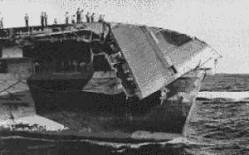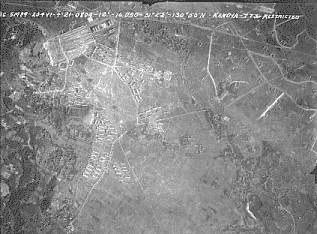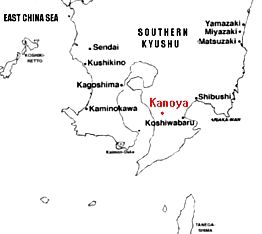|
Group | ||||||||||||
|
| |||||||||||
|
| ||||||||||||
![]()
|
Action | ||||||||||||
|
| |||||||||||
|
| ||||||||||||
![]()
|
Welcome To the CIC | |||||||||
|
| 6-7 June 1945: On June 5, just prior to this raid the USS Ticonderoga rode out a typhoon and was not damaged, but an innumerable number of ships were damaged. The bombing again shifted to Okinawa in the Ryukyus Islands (See Map Insert #2).
6 June 1945 Sunrise 0535 Sunset 1912 1200 Position 24-50 N 129-11 E Weather – Clouds ranging from high scattered to high broken, lower scattered, with 3/10-6/10 stratocumulus, 1/10-7/10 altostratus-altocumulus. Ceiling generally unlimited, visibility 12 miles most of period. Winds westerly 14-18 knots, very high sea becoming moderate late in period. Flying conditions generally good. General – Fueled ship. Two support Air Groups, the first consisting of a Target Coordinator and one escort in 2 VF plus 10 VB, and the second consisting of 4 VT were launched at 0840 and ordered to report to CTF 31 for air support over Okinawa. One additional VB spun in on take off but both pilot and crewman were rescued immediately by a destroyer. 6 of the VB and 4 VT dropped 28 500-pound bombs on designated enemy gun emplacements and other positions facing our troops. A third support air group including a Target Coordinator and one escort in 2 VF directed by Commander Support Air Control Unit to drop their bombs on the southern beach in Okinawa. A fourth support air group of 4 VT was launched at 1451 and dropped 16 500 pound bombs on two designated ridges on a southern Okinawa. Seven Target CAP including 80 VF in all orbited the area north of Okinawa throughout the day. All of these flights except Target CAP number 6 reported negative results. A division of the latter flight encountered and shot down 3 Tony’s flying low on the water to draw the first blood for Air Group 87. 28 CAP were flown over the Task Group. 7 June 1945 General– Three Support Air Groups each with a Target Coordinator and escort in 2 VF were provided CTF 31 for support of our troops on Okinawa. The first, in addition to the Target Coordinator, consisted of 8 VB and 4 VT which dropped a total of 30 500-pound bombs on designated enemy positions on southern Okinawa. The second composed of3 VB and 9 VT dropped 42-500 pound bombs as directed in tombs and enemy troops on a wooded ridge and received “extremely well done” from the Air Support Controller. The third with 7 VB and 4 VT dropped 28-500 pound bombs on designated enemy troops and gun positions on the south side of a ridge in southern Okinawa. 16 CAP and 16 RAPCAP were flown during the day over the Task Group and a special search of 8 VF with a communication relay of 4 VF were sent out to search for friendly shipping dispersed by the typhoon. Much friendly shipping was seen though the particular objects of the search were not located. 8 June 1945:The Kanoya Airfield, Kyushu (See Map Insert #3) is not far from the Kokobu and Ranchi Airfields bombed on June 2-3. 8 June 1945 General – At 1020, 42 VF were launched for a coordinated fighter sweep, with all of the other carriers of TF 38, against Kanoya Airfield in Southern Kyushu. TICONDEROGA planes were armed with 2-260 pound fragmentation bombs apiece with VT fuses. They had as their target Area 2, which included the aircraft dispersal areas and revetments east of the hangers and shops, and north of the runways. Our planes heavily strafed the area and saturated it with 80 fragmentation bombs. Nine enemy planes were destroyed and at least 23 others were claimed as damaged. Beyond this, damage assessment was difficult but the attack is considered to have been well executed. One plane after two passes over the target was forced to land on the water east of Kyushu because of engine trouble. The pilot was picked up by the rescue submarine. Two other planes received minor damage from enemy anti-aircraft fire described to be of moderate intensity. Though no regular photographic sorties were flown some excellent pictures were obtained with K-25 cameras. 32 CAP were flown over the Task Group.
|
| |||||||
|
| |||||||||



